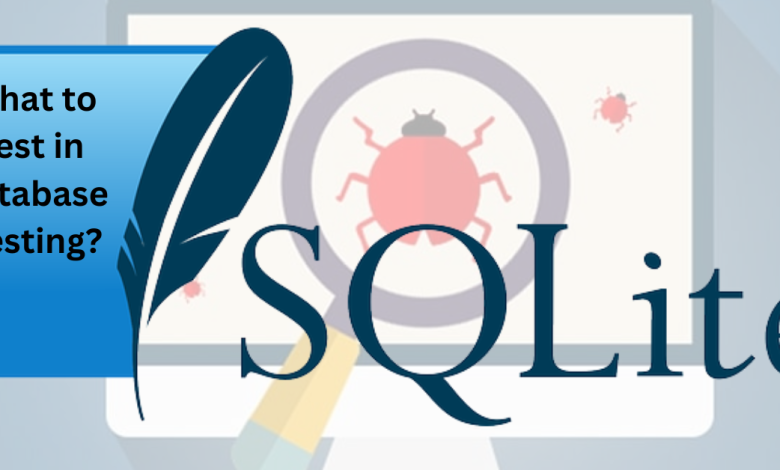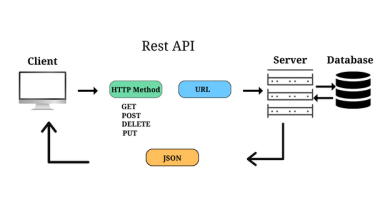
Introduction
“What is a database, and what to test in the database is Database testing” is the answer you should know at the very start of your career in QA. Unfortunately, most seniors hesitate to work with databases, and they are unaware of the basic queries that are essential to perform database testing. We have a category with the title “Database Testing where you will find related concepts. Coming back to the topic, let’s try to understand it.
Note: This blog will give insight into Database Testing, To acquire the skill set of database testing, read more blogs, related books, and watch tutorial. Having environment to practice queries will further polish your expertise.
Database
A database is like a catalog where we store and organize information. just like a cupboard with various compartments of different sizes where we neatly arrange things based on their categories.
In technical terms, a database is like a structured storage space where we organize and store specific types of information. If we talk about “University Employee Management System” database. we create a “Teachers” table to hold detailed information about each teacher.
Two main types of databases are:
Relational Databases
They organize data into structured tables that have rows and columns, which makes it easy to establish relationships between different data elements. Examples include MySQL, Oracle, and Microsoft SQL Server. Fields is alternate term for column of the table in database.
Non-Relational Databases
They are unstructured database, these store data in more flexible formats, such as documents, key-value pairs, or graphs. They are suitable for handling unstructured or semi-structured data and companies often use such database in big data and real-time applications. Examples include MongoDB, Cassandra, and Redis. At this point, this theory is enough for you, there is no need to explain it further.
SQLite
SQLite is a unique, file-based relational database management system (RDBMS) that stands out for its simplicity. There’s no need for installations or complex setups. It doesn’t require a separate server process, making it hassle-free. This simplicity makes it compatible across different platforms.
Everything about this database is wrapped up in a single disk file. All the data is read from and written to this file directly. This design ensures that SQLite follows strict transaction rules (known as ACID properties), which protect data even in cases of unexpected system crashes or power outages. It’s a neat and efficient solution for managing data.
Database Testing
Database testing checks if the data entered in a database is correct and secure. It prevents data loss, stops unwanted access, and safeguards transactions.
What to Test in Database Testing
Normally in database testing, CRUD operation, testers often work on this portion of the database testing. Another important thing in database testing includes transaction, Schema, Triggers, Database constraints, Stored Procedures, Views, Index, and so on.
I claim that, in many cases, QA primarily deals with CRUD operations based on my experience. I have substantial experience in this field. In most of the cases i only need select queries, occasionally updating queries, and rarely deleting queries. As IT support roles, I also gained experience in database backup and restoration. This underscores that having a solid understanding of databases is important, and expertise in a specific area like CRUD operations, which can involve complex queries, joins, and grouping, is often enough
Data Integrity
Maintaining data integrity is the foremost objective of database testing. It involves ensuring that data stored in the database remains accurate and consistent over time. To test data integrity, consider the following:
- Data Validation: Verify that data conforms to defined constraints, such as data types, lengths, and formats.
- Primary Key and Unique Constraints: Confirm that primary key and unique constraints prevent duplicate or null values in key columns.
- Foreign Key Constraints: Check that foreign key relationships are there to maintain referential integrity.
- Default Values: Ensure the default values and setting in the application.
Data Security
Database systems often contain sensitive information, making security a top concern. Test for data security by examining:
- Access Controls: Verify that only authorized users can access specific data or perform certain operations.
- Data Encryption: Ensure that encryption are there for protecting sensitive data storage and communication.
- Authentication and Authorization: Confirm that authenticated users are accessing the database and authorized to perform intended actions.
- Data Masking: Test masking on sensitive data for non-privileged users.
Data Retrieval and Query Performance
Testing the efficiency of data retrieval and query performance is essential for a responsive and scalable system. Key aspects to consider include:
Query Optimization: Analyze query execution plans and indexes to ensure queries run efficiently.
Concurrency: Test the system’s ability to handle multiple simultaneous requests without deadlocks or performance degradation.
Caching: Evaluate caching mechanisms to improve query response times.
Scalability: Assess how the database performs as the data volume increases, ensuring it can scale effectively.
Data Migration and Backup
Data migration and backup are essential for maintaining data continuity and disaster recovery. Test these aspects by:
Data Migration: Validate that data migration, that their is a smooth process of moving data from one version or database system to another.
Backup and Restore: Test backup and restore procedures to ensure data recovery in case of system failures.
Error Handling and Logging
Effective error handling and logging are critical for troubleshooting and identifying issues. Test these by:
Error Messages: Verify that error messages are informative and actionable.
Logging: Ensure that logs capture relevant information for debugging and auditing purposes.
Importance Of Database Testing
As database testing is integral part of software testing that make it sure that a database is not only reliable and robust but also meets the requirements and specifications of a software application. It involves a comprehensive evaluation of different aspects of a database to ensure data accuracy, integrity, security, and performance.
Must Read
Database testing is super important, but never, ever try it on real, live systems. You see, in most companies, there’s a proper QA process: QA guys can’t reach the production database. But if you somehow get your hands on it, Avoid to perform the database testing directly on it.
Here’s another tip: Sometimes QA people work on both the test and production systems together. They might run tests on the prod system unintentionally, and that can be messy. So, the best practice is to keep things separate and tidy!
Software Testing Tools | What to Test in Database Testing?
A variety of database testing tools are available, and your selection of the appropriate tool depends on one or more of these factors:
- Your chosen testing approach may be manual, automated, or a combination of both (hybrid).
- The type of database you are working with, whether it’s SQL or No-SQL.
- The specific database vendor you use, such as MySQL, MSSQL, Oracle, or others.
Most database testing solutions consist of more than a single tool. For instance, in Java applications, you can utilize Selenium alongside TestNG for database testing.
Conclusion| What to Test in Database Testing?
Database testing is a vital part of ensuring the quality and performance of any software application that relies on data storage and manipulation. With database testing, one can build confidence in the application that it is reliable, secure, and capable of delivering optimal performance. Investing in robust database testing practices is an essential step in maintaining data accuracy and the overall success of your software application


